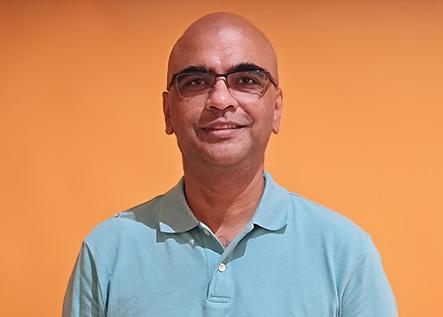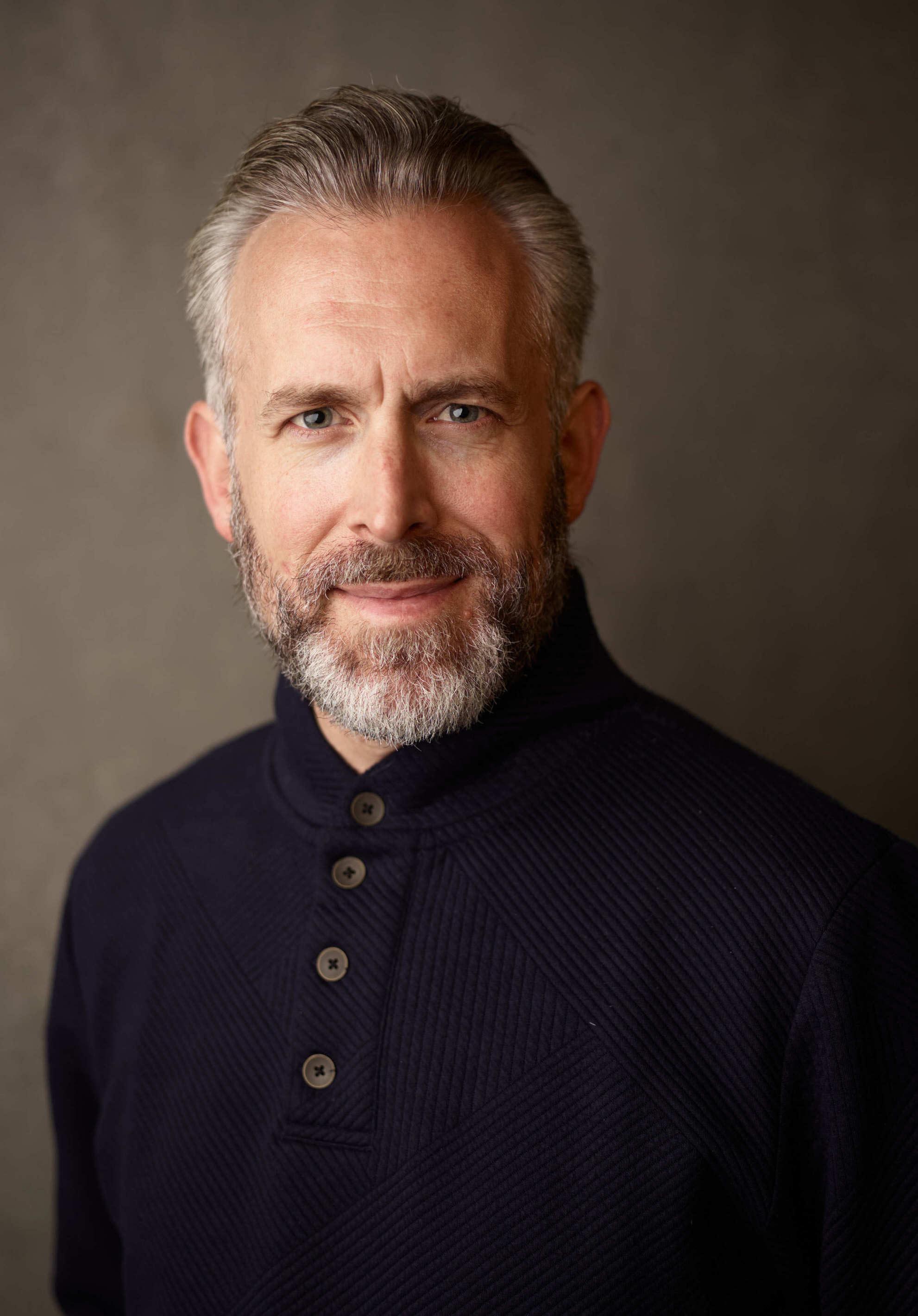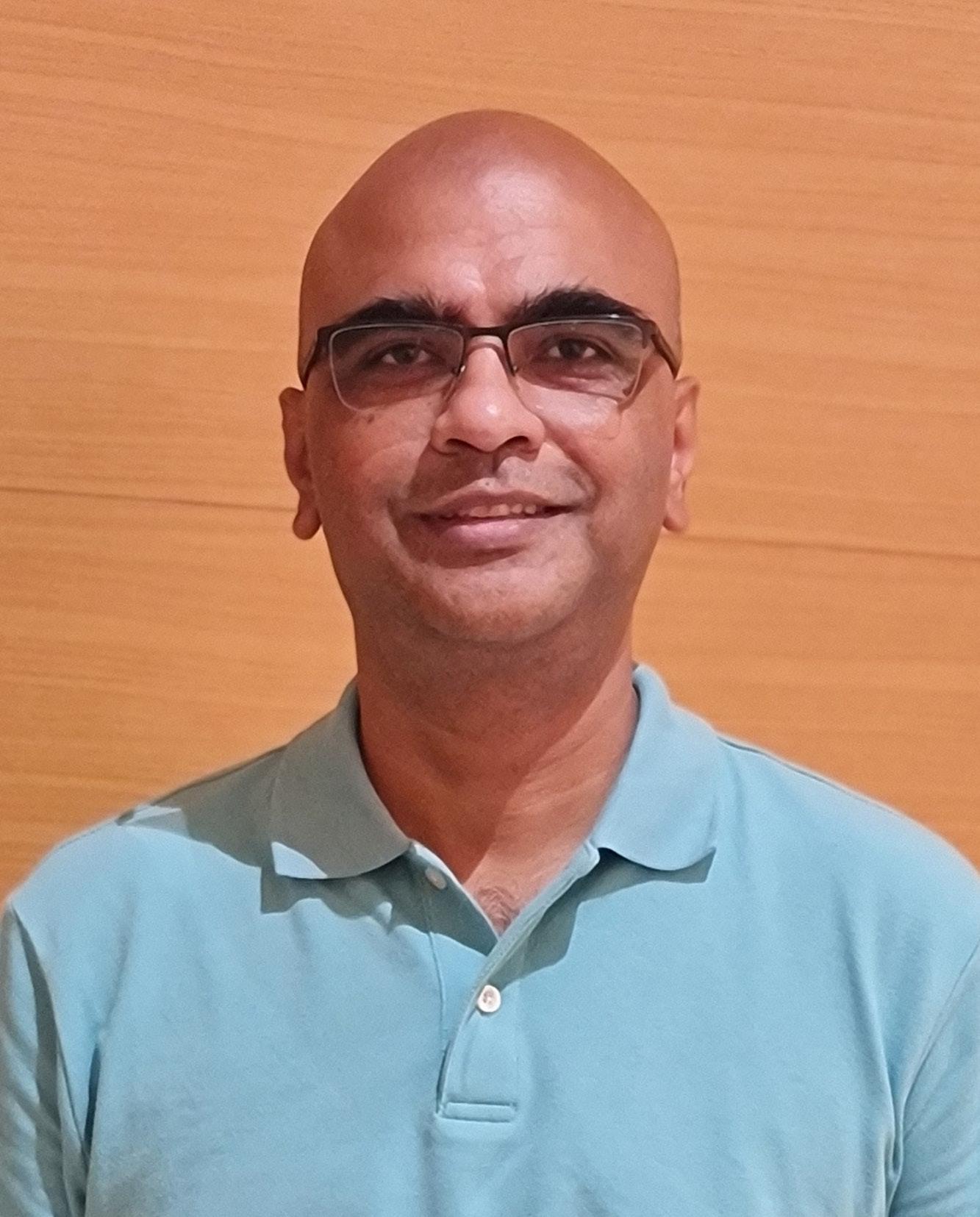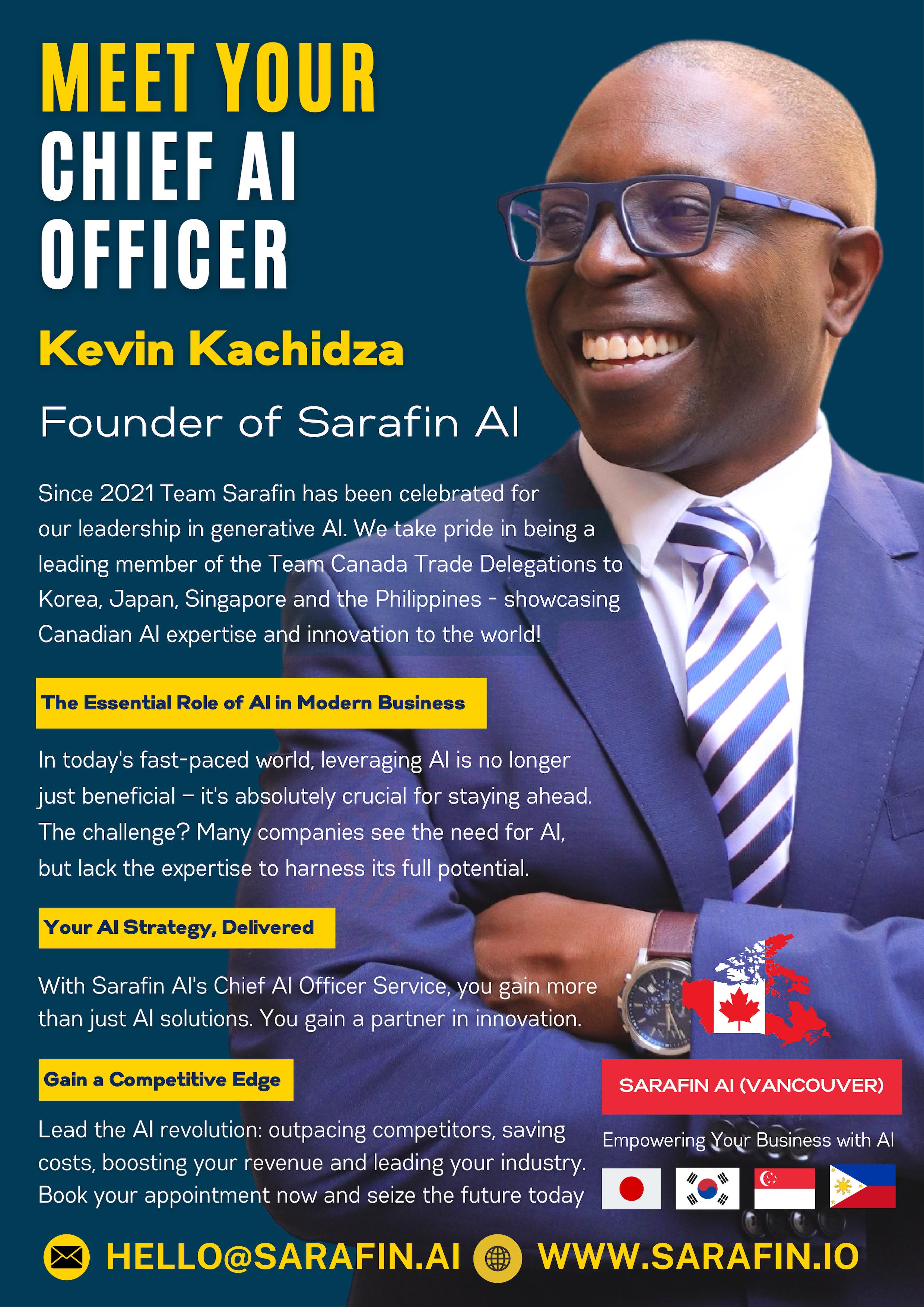Exploring Global Insights

Lost and Found
Sometimes playing it too safe is a greater risk than venturing into the unknown
United Nations Insights
Tasked to create a special initiative by UN Secretary General, Ban Ki-Moon
Acquired by LinkedIn
Startup sage who cofounded SlideShare provides unique perspective
7 Spring 2024
Entrepreneurship • Innovation • Leadership Issue

Welcome to the seventh issue of the Horizon Search magazine, featuring eight articles complementing our podcast interviews with subject matter experts around the world. From finance to healthcare, tech to public service, these intrepid professionals share their stories of perseverance and creativity.
We are thrilled to be recognized by the International Design Awards. Thanks to our brilliant team and amazing guests, our content keeps getting better.

2 / HORIZONSEARCH
TABLE OF CONTENTS

04.Finding Purpose Beyond Comport
Twenty-two-year-old Ram Seshadri found purpose as a content lead at a wildly successful startup accelerator.

14.Brand Of Compassionate Cosmetics
From movie sets to hospital wards, LeiLani Kopp uses makeup to help others live their dreams in a healthy, sustainable way.

10.Integrating Finance and AI
Sonja Kohn has a Medal of Honor from the Austrian government for her contributions to the country’s financial sector.

18.Navigating Digital Transformation
Ganesh Mahadevan has a wealth of experience working for Fortune 500 companies from the tech capital of India in Bangalore.
Table of Contents / 3

24.Transforming Surrey’s Business Landscape
As President and CEO of the Surrey Board of Trade, Anita Huberman has big plans for the city set to soon become British Columbia’s largest.

30.Use AI but With SelfRestraint
Born to diplomats, Ramu Damodaran has only every known global citizenship and nuanced perspectives.

36.Unpacking Servant Leadership
Joh Olson addresses leadership crises through servant leadership and delegation mastery, aiming for effective business management.

42.From SlideShare to Indian IT Revolution
Amit Ranjan co-founded Slide Share, led its global success, contributed to DigiLocker in Indian government, and volunteers with iSPIRT.
4 / HORIZONSEARCH

FINDING PURPOSE BEYOND COMFORT: RAM SESHADRI’S JOURNEY TO SELFDISCOVERY

Ram Seshadri Content Lead | Neon
Lost and Found: Playing it too safe may be the greatest risk you’ll ever take
Ram Seshadri did not know what he wanted to do with his life. Holding an IB diploma and witnessing his brother drop out of engineering to enter a different field, he looked for opportunities across the UK, US and Canada that would allow him some stability.
He knew he enjoyed writing, so in 2017, he joined Canada’s top journalism program at Toronto Metropolitan University (formerly Ryerson University). Yet despite moving countries and being accepted into a topranking program, Seshadri still couldn’t find the clarity he was looking for.
While many people in his batch had a clear focus for why they pursued journalism, Seshadri
had a long way to go. A journey that ends at a completely different destination than what he’d imagined.
Fast forward to 2021. He’s still pretty lost. At this point, Seshadri has completed multiple internships, including one with the National Post, but he’s left with more disappointment and anxious feelings than before.
‘I feel like I don’t belong here’
After experiencing what it was like working in a newsroom, he realized that in the process of trying to amplify other people’s voices and stories, he was losing his own. The editing process did not leave Seshadri with much to call his own.
“If I can’t even tell my writing apart from anybody else’s in the journalism industry, then
6 / HORIZONSEARCH

“If you don’t feel like you’re working hard enough, I think that’s a good thing. I feel like you’re constantly striving to be more than what you are and that’s the only way to climb whatever ladder you are in life.”
Finding Purpose Beyond Comport / 7

I feel like I don’t belong here because I wanted to stand out in a creative sense,” he said. “I think that was the point where I was like, okay, do I really want to go further down the journalism line if I know that I’m just following a certain template that’s been brought out to us?
Seshadri’s parents didn’t pressure him, but he still felt a sense of responsibility to give back to the ones who raised him and sacrificed so much for him to have the opportunities that he did, especially his mother.
“I don’t know why this person loves me so much, but I’m going to do my hardest in life to make sure that I’m not the reason for her tears, and that’s what kept me going,” he said.
This is when his inner calling towards the world of entrepreneurship started to whisper. Dissatisfaction with the status quo. “I had this kind of existential crisis where I was not sure what I wanted to do with my life at that point. I knew that if I went into a certain line of work
I’d do well in it, but I didn’t feel like I would be satisfied with it,” he said.
“I didn’t feel I could be that kind of nine-to-five person who could just devote all my hours to breaking a story.”
So he decided to give it one year, before considering a completely different career.
Intro to Social Services
Seshadri had always loved helping people, so he decided to use his media skills to bring important causes to the public eye. In the year that he gave himself, he volunteered in a food bank called the Daily Bread.
“I recognized that currently I’m not being paid for this but I’ve never felt more satisfied with the kind of feeling I’m getting from being there,” he said. “That’s when I recognized that, okay, maybe journalism isn’t it for me, but maybe I could go into social services and I could write for them in some capacity.”
8 / HORIZONSEARCH

Another realization that gave him an idea about what he wanted to do. Bits and pieces of his life started coming together. “I started going there every single day, made a lot of connections there, everyone started to get to know me as well. In about two, three months, I started working as an admin worker at the Daily Bread,” Seshadri said. “It was an amazing experience honestly. I think that was the most fun I’ve had in Toronto.”
“If you were to look at where I was in my first few weeks at the job, compared to now, it’s a night and day difference, honestly speaking, because I knew nothing about business. I’ve never been really interested in it until recently.”
Then reality came back knocking at his door. While he was having the time of his life working for the Daily Bread, it wasn’t sustainable. So
now he was faced with two choices. Either to stay or to move to India.
“Either I stay in Toronto, and I continue to go through these mixed emotions and go through these feelings of guilt, feelings of isolation, or I figure out a way somewhere else,” he said. Although he tried to block other people’s opinions out of major life decisions, his friends’ and family’s concerns still held a place at the back of his mind.
The dollar was more valuable than the Rupees in India, but nothing compared to the value of his life.
Getting off this patch of grass
So early this year, he sat down with his dad and had a heart-to-heart conversation. “I told him that the grass might not be greener on the other side, but I just know that I want to get off this patch of grass on this side,” he said. “I’m okay with giving it a shot somewhere else, I’m
Finding Purpose Beyond Comport / 9
okay with taking a risk. I haven’t taken a risk in a long time. Let me just take it now. I will look after myself if I have to, just let me leave. I need to leave and figure out what I want to do next.”
Seshadri still didn’t know what he wanted to do, but at least now he realized what he didn’t.
Finally, he packed his bags and flew across the world all the way to India to find his calling. But before taking up anything new, he made sure to take a short break of a month to spend time with family, and to think about what he wanted to do next.
Sports was something he was always interested in. Even during his study and internship period, he tried to find any means to talk and report about sports. So naturally, he applied to sports jobs across the country.
That’s when another realization hit him.
“Ever since I was young, I’ve been using sports as an escape from reality,” he said.
to go for an interview. Driven, motivated, and eager to find his purpose, Seshadri decided to give it a shot.
The power of an ambitious leader
It was time for an interview with Nansi Mishra, one of the co-founders of Neon, a half venture capital and half podcast company. Ahluwaila and Mishra both run the company as a couple. After the interview, Seshadri just knew this was it.
“I could see throughout the whole call how ambitious she (Mishra) was. I was like wow, I don’t know where these guys are gonna go but I want to be on this ride with them,” he said. This is a clear example of the impact of a high-energy, ambitious and driven leader.

“While it was like one of those things where I’m very passionate about it, I just knew that it wasn’t something that would get me completely satisfied in life because it was something I’ve been using not to find purpose in life, but rather, I’ve been trying to run away from that purpose in life using sports.”
So he continued his job search in a different direction and applied to multiple social services jobs.
Eventually, he came across an interesting opportunity through one of his dad’s connections. Siddhartha Ahluwaila was his first point of contact, who then encouraged him
“Once the call ended, I came out of my room. I told my dad, look, I don’t know where this is gonna go, I don’t know where this company is gonna go, but I want to be in this company,” Seshadri said. The reason why he chose a startup over a much larger company was because he’d much rather be one in three or four people than among hundreds.
“I didn’t want my voice to be lost in a sense, because that will just remind me of the times in Toronto,” he said. “I wanted to be in an organization where every single move I did would show, like I could analyze exactly what I provided for this company.”
Of course, nothing great in life comes easy
The job was for the position of content lead, which sounded attractive, but it was a sevenhour train ride from where his parents lived. Seshadri’s decision to join the company, however, remained undeterred.
10 / HORIZONSEARCH

INTEGRATING FINANCE AND AI WITH SONJA KOHN

Sonja Kohn calls herself an old lady who loves innovation. She really undersells her accomplishments with that introduction. For example, she forgets to mention her nearly decade-long advisory role to the Vienna Stock Exchange. She served as an advisor to the Minister of Economic Affairs of Austria and worked in a similar role for the government of Gibraltar, too.
She’s also the founder of BestFit, a platform that works on unifying human intelligence with Artificial Intelligence and Business Intelligence.
SonJa Kohn Founder | BestFit
Her company uses the latest research in neuroscience, behavioral science, and psychometrics to create algorithms that predict customers’ thinking patterns, decision drivers, and preferences to increase overall sales for their clients.
Financial Innovation in the Government Sector
Kohn was born and bred in Vienna, Austria, where she started her professional journey. Sonja was always motivated to work hard and gain more knowledge in the field of finance. She eventually made herself indispensable when it came to adding value to how things ran at the Vienna Stock Exchange. Sonja wasn’t your typical advisor. She didn’t just sit in meetings. She fearlessly shared whatever she knew, and that’s why financial bigshots and governments preferred her as an advisor. She had a different way of approaching the subject of finance and always thought of it not in terms of numbers but in terms of the humans who were using those numbers.
12 / HORIZONSEARCH

“At the end of the day, people use finance. I mean, machines aren’t getting any benefits from finance. Think of finance as the blood vessels of the economy, and the economy is here for the people to use. I do feel that innovation often builds bridges, especially international bridges.”
Building Bridges With Joint Ventures
That’s what Kohn was good at. Building bridges across different cultures. She orchestrated joint ventures between the Austrian Stock Exchange and the Beijing Stock Exchange and another joint venture between the Austrian and Dubai Stock Exchange. Sonja recalls that the most important aspect of making these ventures work was understanding and respecting the subtle differences in all these different cultures
that were worlds apart. Building good relations has been the key to Sonja’s success as an advisor and a business owner.
“Friendship leads to mutual respect and understanding, which leads to business development.”
The Austrian Stock Exchange’s joint venture with the Dubai Stock Exchange led to the creation of the Austrian governmentguaranteed fund in the UAE (United Arab Emirates). It serves as a standby guarantee for companies between the two countries that want to do business together. This fund gave rise to several financially viable businesses for both countries and earned Kohn a Medal of Honor from the government of Austria.
“If you want something in the commercial world to work. Find a way for the government to guarantee it. It speeds up the process and makes it bigger. All of a sudden, one can do things one couldn’t do before.”
Integrating Finance and AI / 13

Difference in Culture Between the Chinese and Emirati Stock Exchange
As an Austrian professional, Sonja found working with the Chinese government to be a vastly different cultural experience compared to her collaborations in Dubai. She notes how the more government-controlled financial systems in China introduced a layer of bureaucracy in her dealings. Conversely, her experience in Dubai was marked by a more open and collaborative approach, particularly evident in their receptiveness to integration into the international business sphere.
While Sonja observed distinct cultural differences in her dealings with China and Dubai, she also recognizes several commonalities between the two, particularly in their approaches to financial and economic growth. Both countries demonstrate a strong commitment to expanding their economies, characterized by significant wealth and a reputation for innovation and rapid development.
Transitioning into the AI Space
After a successful run in the financial sector in
both governmental and corporate spaces, Sonja Kohn shifted gears to get in on the AI boom in 2015. BestFit is her brainchild. It’s a product that also follows her philosophy of including human emotion as a consideration in science, finance, and tech. The predictive algorithms at BestFit merge human insights with technological advancements to predict consumer behavior. However, this shift to AI wasn’t a spontaneous one. It was a strategic move based on the analysis of the current financial landscape. Sonja elaborates that she made the decision to delve into AI and the Information Technology space after one of the world’s leading investment advisory and risk management solutions providers, BlackRock, acquired a digital wealth management firm called Future Advisors for a whopping $150 million. So Sonja didn’t really leave the financial space. She just evolved along with it.
“When I’m looking at an industry, I ask my team to take a white page, look at the different players in the industry, and create three columns. Add what they’re doing in the first column. Add why they’re doing what they’re doing in the second column and leave the third column
14 / HO RIZONSEARCH

empty for me. Which is usually titled ‘Why the hell is no one doing that?’ That’s how I identify market niches.”
As the robo-advisor wave surged, Sonja recognized a critical gap left by the transition from offline to online investment processes. While others focused on taking interactions digitally, they inadvertently left behind the nuances of face-to-face meetings – the unspoken cues, the body language, and the emotional intelligence that seasoned financial professionals rely on. Sonja identified this as the untapped market niche: the human element lost in the rush toward digitization.
BestFit was crafted from AI algorithms and an amalgamation of behavioral science insights. Collaborating with a team of neuroscientists, Sonja leveraged the work of great minds in the field, including Harvard Business School professor Gerald Zaltman, and Nobel Prize laureates Daniel Kahneman and Richard Thaler. They recognized that emotions play a pivotal role in decision-making, with a staggering 95% of choices made in the unconscious brain. Sonja’s platform seeks to understand how individuals make decisions based on facts or emotions. BestFit became the bridge, filling the void in the digital realm by infusing human
factors into financial advisory services. More than making investments, her groundbreaking platform is about revitalizing the advisorinvestor relationship with the richness of human understanding.
The Future of AI in Business
Sonja is optimistic about the future role of AI in business and innovation. She views AI not as a threat to human jobs, but as a vital tool that contributes to the evolution of human capabilities. Her perspective on AI is practical: she sees it as an integral component that will soon become commonplace in our daily lives and business functions. While Sonja’s primary focus is on leveraging AI technology to solve specific business challenges, she is also mindful of the ethical and moral dimensions associated with its deployment. She believes that a balanced approach, considering both practical utility and ethical considerations, is essential.
Sonja envisions AI as a means to enhance customer interactions, discover new growth opportunities, and streamline operations. In her view, AI is not an abstract concept, but a tangible resource that can augment, rather than replace, human decision-making. In essence, it is a tool that works alongside humans, complementing and enriching our capabilities.
Integrating Finance and AI / 15
LEILANI KOPP’S BRAND OF COMPASSIONATE COSMETICS

“I have always known how makeup transforms us on the outside. However, over the years, I’ve come to realize how makeup transforms us on the inside. It’s more than makeup. It’s therapy.”
16 / HORIZONSEARCH

A Passion for the Art of Makeup
“I’m going to be doing Grammy’s makeup and hair,” said LeiLani Kopp when she learned her grandmother had passed away. The then sixteen-year-old shocked her entire family with this statement, but she wanted to make her grandmother look beautiful at the funeral, and so she did. Growing up, LeiLani had always wanted to be a special effects makeup artist. She believed makeup and special effects were an art form and that she could bring solace to people through her art.
LeiLani now runs a health and beauty platform called Sweet LeiLani Cosmetics. The brand aims to help people with their health and skin conditions by providing them with gentle makeup infused with natural plant-based skincare. The platform also offers trustworthy advice from medical practitioners and skin specialists.
Moving Back to Vancouver from LA
Her passion for makeup eventually led her to Los Angeles, where she learned how to do special effects for two years by interning
LeiLani Kopp
Founder & CEO
Sweet LeiLani Cosmetics
on movie sets and working with movie stars. However, life brought her back to Vancouver, where her career took an unexpected turn.
LeiLani wanted to explore career options as a mortuary cosmetologist, but she hit a roadblock when she realized that the profession didn’t exactly exist in the city then. She realized that she would instead have to become an embalmer, which wasn’t something that she wanted to do or was passionate about. So, for a while, she found herself navigating through odd jobs to gain her footing in the industry by becoming part of the union and gradually moving up.
Eventually, her persistence paid off, and she became a well-sought-after makeup artist in Vancouver, working on every TV series and Hallmark series that came to Vancouver, including Jump Street, Wise Guys, and MacGvyer.
Healing With Makeup
Kopp’s journey expanded when she volunteered with the Cancer Society’s Look Good Feel Better program. Over there, she discovered
Brand of Compassionate Cosmetics / 17
that many makeup products cannot be used for patients with sensitive skin or allergies. As she came to this realization, she began extensive research and created a skincare cover camouflage that was highly effective for cancer patients and makeup artists alike. This became her catalyst for inspiring change.
“I had husbands crying and hugging me because their wives would go out in public again. It was just so heartfelt and warm that I couldn’t let it go. I was like a dog with a bone. And I just kept at it and kept at it until finally they listened
and started sending me people.”
Moved by the impact her work had on cancer patients, she wanted to expand her focus to help individuals who have gone through scarring or burns in life. There was some resistance from medical professionals, who believed that makeup was inconsequential, but LeiLani had faith in her vision, and through perseverance, there was a breakthrough.
Establishing an Ethical Cosmetics Brand
Throughout her journey, her passion for helping others pushed her in the direction of transforming lives through specialized makeup expertise. The joy stems from being able to help the patients heal through makeup and find the confidence to smile and go out in public.
While her passion for cosmetics drove her forward, LeiLani also had to teach herself everything from an entrepreneurial standpoint. She was learning as she was going. While there was a bit of naivety about the business world
in the beginning, she did her due diligence and research. Navigating the intimidating world of accounting, cash flows, logistics, and manufacturing without formal training. All of

these challenges only helped her become more motivated and dedicated to her cause. LeiLani always knew she wanted her brand to be eco-conscious, which she found important from not only an ethical point of view but also a marketing point of view. So, she delved deeper
18 / HORIZONSEARCH
into the world of makeup to find different product ingredients that would cater to people with allergies, autoimmune diseases, and other skin-related problems.

When working with pregnant women, people with lupus, and conditions like celiac disease, she realized the importance of considering what products certain individuals can use, particularly because some substances being absorbed into the body may affect their
existing health conditions. Due to this, Leilani has broadened her understanding beyond just cosmetic products, and she was able to recognize the connection between product ingredients and health conditions while also remaining ethical throughout the supply chain.
“There’s a lot of conditions that people don’t talk about, and I’ve been fortunate enough to work with a small team of doctors and pharmacists that also believe in that, and we’re working together to create products that will aid and relieve some of these conditions.”
From Wholesale Retail to E-Commerce Platform
Although LeiLani’s brand has always had a traditional wholesale retail business model, she is now in the phase of building out a strong e-commerce platform to make it more accessible to all sorts of customers. The e-commerce platform will also roll out new products focused on menopause, perimenopause, and men’s skin issues. While it will continue to bring its loyal customer base a series of health blogs for all kinds of skin conditions and other diseases that affect appearance, with the help of a panel of doctors and pharmacists LeiLani collaborates with.
LeiLani’s growth and journey as a special effects makeup artist to someone who began to help people rediscover their confidence is inspiring on many levels. Her story depicts that our passions, no matter what they seem to those around us when we’re younger, can end up having a much greater impact than we anticipated.
Brand of Compassionate Cosmetics / 19
Navigating Digital Transformation With Ganesh Mahadevan

Ganesh Mahadevan works in Koramangala, Bangalore, the Silicon Valley of India. Despite being massively successful at his job as an executive leader in the IT industry, he believes in the power of continuing to upskill, learn, and grow.
Over 17 years of experience in the Information Technology (IT) industry has led him to his current executive job as Chief Data and Insights Officer and Head of Digital Transformation at Bosch Global Software Technologies (BGSW). As if that wasn’t impressive enough, he’s also currently enrolled in India’s flagship MBA program for working executives at the Indian Institute of Management (IIM) in Bangalore.
An Expert at the Forefront of Technological Innovation
Bosch Global Software Technologies
Mahadevan has worked in varied crossfunctional leadership positions, from product development, innovation and technology, sales, and presales to delivery and thought leadership. Having previously worked with tech giants
Ganesh Mahadevan
Director, Chief Data and Insights Officer & Head of Digital Transformation
20 / HORIZONSEARCH

such as Atos, Accenture, and SAP Labs. He’s also co-authored a book on high-performance analytical appliance (HANA) technology titled “SAP HANA Cookbook.”
“At Bosch Global Software, my job is to keep exploring different avenues through which digitalization can help drive business. To identify technologies that can be leveraged to enable our business to run faster, simpler, and fit for the future. As a digital organization, we aim to simplify, connect, and transform business to achieve its objective.”
Ganesh has a wealth of knowledge and expansive practical experience in everything at the forefront of global technological innovation today. Data, AI, Cloud, SAP, Emerging Technologies — you name it, he knows it, and he’s been there. He also has two patents, one for a smart pill box in the healthcare industry to support tuberculosis treatment and a second for professional software services aggregation.
Working at Accenture vs. Bosch
Comparing his experience at BGSW with that of Accenture, Mahadevan says that while both are Fortune Global 500 companies, they have very different organizational focus, position, and structure. Accenture is a global information technology consulting and services giant that’s a top player in the industry. Mahadevan worked as part of the core technology consulting division at Accenture.
On the other hand, BGSW is the software wing of the Germany-based multinational engineering and technology conglomerate Bosch. So Bosch Global Software was designed for the sole purpose of driving more value and business for Bosch. Admittedly, Bosch is higher up the Fortune Global 500 list. Despite Accenture being the largest consulting firm in the world and the consulting company for more than three-quarters of the Fortune Global 500.
Insights on Digital Transformation
Navigating Digital Transformation / 21

Ganesh Mahadevan broke down his insights on digital transformation strategy into a series of high-level steps to achieve success in digital transformation for us. He says one should always start with understanding the key basics of the business.
Understanding the business model is also important because what might apply to an enterprise might not apply to a digitally native business model. Having understood the business model, the next step is to determine the strategic vision for digital transformation. To determine how it can align with organizational
objectives—connecting all fronts, like technology, people, business, and customer needs.
“Digital transformation is not a purely technological problem. It requires sensitivity to business dynamics, market changes, and key stakeholders such as customers, consumers, partners, and sometimes even machines. ”
Further steps include integrating cross-
22 / HORIZONSEARCH
functional aspects of the business to achieve organizational success. The next process involved more specialized steps according to the industry in question. For example, the Internet of Things (IoT) industry may look for ways to drive transformation in discrete process manufacturing. On the other hand, professional services organizations may focus their digital transformation on enhancing customer experience and so on.
The Power of Design Thinking
Mahadevan approaches challenges in digital transformation with the help of a design thinking approach toward problem-solving. It is an extremely useful methodology for tackling complex, ill-formed, and abstract problems. It involves tackling technological problems in human-centric ways by first understanding the human needs involved. The design thinking process involves five main stages: empathize, define, ideate, prototype, and test.
Mahadevan believes this methodology can be applied in digital transformation processes to understand customer pain points. He says customers are usually vulnerable, unsure, and unable to articulate their needs or what they want from your business. Ganesh thinks
it’s the business’s responsibility to engage its customers with the help of design thinking. By understanding their needs, identifying their problems, and then coming up with solutions to those problems to drive business for your organization.
The Future of Enterprise Resource Planning
The core of any organization is its enterprise resource planning (ERP) system, says Mahadevan. For those of our readers who do not have a technical background, an ERP is a type of software system that helps organizations automate and manage day-to-day core business activities for optimal performance. Core activities may include accounting, project management, risk management and compliance, supply chain operations, and procurement. The top 3 global leaders in ERP systems are SAP, Oracle NetSuite, and Microsoft Dynamics 365 Business Central.
However, according to Mahadevan, the core is not where technology innovation and digital transformation occurs. It involves the basics of running the everyday functions of a business. He says that innovation takes place at the

Navigating Digital Transformation / 23
edge of an organization. Meaning that new technologies such as artificial intelligence, machine learning, and language learning models exist at the edge of a business, where they can drive business transformation.
For Ganesh, the future of ERP includes integration with AI and Generative AI technologies by working with hyperscalers or large cloud service providers such as AWS, Azure, and Google Cloud. He predicts that 2024 will be an interesting year for advancements in ERP technology. It is undergoing digital transformation and innovating AI-based ERP solutions by harnessing advanced machine learning algorithms. This will result in ERP systems having the ability to analyze large amounts of data in real-time and identify patterns to make intelligent predictions for the future.
Cultural Shift Towards Technological Entrepreneurship
Ganesh looks at entrepreneurship as more of a culture in the current era of advancements within the field of information technology. He says it’s a school of thought. A way of thinking that demands innovation, creativity, and taking risks. Ganesh believes that the gig economy is the latest trend within this entrepreneurial

culture, thanks to the COVID-19 pandemic. In a gig economy, companies hire independent workers or freelancers for temporary positions on all hierarchical levels for short-term commitments. Many remote jobs are based on this model, which offers more independence and flexibility in work at the expense of little to no job security.
“The speed of technological advances, especially in AI, is mindboggling. At this rate, I’m afraid we might reach technological singularity before 2045. ”
Mahadevan predicts that with the current advancement in AI technology, the future will involve monitoring and governing the global talent delivery network shift towards augmentation, distribution, and gig-based work. New challenges might arise with such technological advancements where the new global talent pool will have to be trained in terms of cultural sensitivity, cross-collaboration, and diversity inclusion. Interpersonal soft skills will also remain crucial in the digital sphere. So, ensuring a balance between soft skill development and digital inclusivity might be a big challenge for the next generation of IT leaders.
24 / HORIZONSEARCH

Navigating Digital Transformation / 25
Transforming Surrey’s Business Landscape With Anita Huberman
Anita Huberman is the President and CEO of the Surrey Board of Trade and has been in this position for the past 17 years, becoming the first South Asian woman to fill this role. The Surrey Board of Trade is one of the top ten Boards of Trade and Chambers of Commerce in Canada. Anita has been serving this board in various capacities for over three decades, along with her role as an honorary captain at the Royal Canadian Navy for the past nine years. She has also been recognized as one of the Top 50 Women Leaders in Vancouver by the Women We Admire, an organization of women executives and leaders across North America.
How did she get here? Through a lot of hard work, conviction, and an unwavering commitment to community development.
Starting From Scratch
When Anita was going to college at the School of Communication at Simon Fraser University,
she first started working for the Surrey Board of Trade in a part-time role. She managed to work through university and pay for her tuition through tutoring gigs. Anita’s path to success wasn’t a linear ascent. During college, she briefly parted ways with the Board of Trade to immerse herself in the World Bank’s customer service management training program.
Upon her return, she re-entered the Board of Trade, marking the beginning of her rise from an executive assistant to operations management to eventually assuming the presidency at the age of thirty-two. Breaking stereotypes in the process, as a young female South Asian leader, Huberman was able to carve a niche for herself in Canada’s business landscape.
Taking Inspiration From Self-Made Women Entrepreneurs
Anita Huberman’s biggest inspiration in life is her mother, who came to Canada at only 19
26 / HORIZONSEARCH

years old. Quite similar to Anita’s journey, her mother worked her way through school to pay for her tuition, learn the English language, and eventually go on to become the Chief Financial Officer at Langara College. Currently, she is also serving as a board member at her local Church and Strata.
So the apple doesn’t fall far from the tree in Anita’s case. Growing up around this commitment to hard work and her mother’s passion for serving her community inspired Anita to pursue something similar. Following in her mother’s footsteps, Anita has become one of the most accomplished women leaders in Canada.
Inspired by her mother’s journey, Anita is committed to making it easier for women to pursue leadership positions. As the CEO and president of Surrey Board of Trade, she actively works on removing the barriers women face in reaching top positions to be able to apply to and achieve higher positions at their respective organizations.
Anita Huberman President
Surrey Board of Trade
The Surrey Board of Trade
Transformative strategies and a vision for sustainable growth have marked Anita’s leadership within the Surrey Board of Trade. Her 17-year tenure has seen the board’s rise in influence, turning it into one of Canada’s top trade and commerce entities. She has a strong focus on establishing an international trade center that capitalizes off of Surrey’s diversity, which will create many business connections globally. Under her guidance, the board has taken strategic steps towards international trade, utilizing Surrey’s multiculturalism to create global business connections.
Her commitment extends beyond economic considerations, with a focus on government advocacy that has redefined Surrey’s visibility and influence. Through mentorship programs and community engagement, Anita has positioned the Board as a catalyst for empowering the youth and fostering inclusivity.
Outside of economic change, Huberman’s
Transforming Surrey’s Business Landscape / 27
leadership has not only elevated the Board’s standing but has also contributed to Surrey’s unique cultural identity—a hub of innovation, risk-taking, and opportunity. As Surrey moves towards becoming British Columbia’s largest city, Anita’s unwavering commitment positions her at the forefront of shaping Surrey’s future as a thriving and inclusive hub.
Economic Development in Surrey
Anita has also served for three years as a trustee at the National Film Board of Canada, where she came up with the idea of building Canada’s film industry not only in the North American context but also internationally. Her close connection with India enabled her to think about bringing Bollywood work to Canada. A lot of Bollywood film directors like to shoot in various North American locations for their audience, which is part of the Indian diaspora, and bringing them to Surrey for shooting is something Huberman is currently working on. That’s just one of the few things Anita envisions for the future of Surrey’s development, one of the largest cities in Canada.
“We are building a film industry not only from a Canadian context but also an international context.”
Anita’s vision for Surrey is one of inclusion, economic development, and infrastructure improvement. She wants to leverage the increased number of refugees and newcomers by providing them with entrepreneurial and workplace opportunities as a way to build a stronger community. To Anita, it’s not just about meeting industry targets but also ensuring that every individual contributes to the economy.
Additionally, focusing on fostering partnerships

with the private sector shows her commitment to creating a vibrant and well-connected city. Anita’s efforts can transform Surrey into an area of destinations, attracting more partnerships and creating an appealing place for many to live and work in.
Surrey has a celebrated culture of risk-taking and innovation in terms of building possibilities
28 / HORIZONSEARCH

from the ground up. This is different from Vancouver, which has an already established culture. Surrey offers an open environment for fostering relationships and embracing entrepreneurial risks. Anita believes in opening oneself up to risks and believes this allows us to learn from setbacks and restart with new determination. It is this culture that defines Surrey’s ecosystem, shaping it into a
dynamic hub that thrives on the pursuit of new opportunities.
As Surrey is going in the direction of becoming British Columbia’s largest city, Anita remains at the center of it all, advocating for economic opportunities and using Surrey’s multiculturalism to drive innovation and growth. Her vision goes beyond the Board’s offices, as she is envisioning Surrey as a thriving tech destination and fostering private-public partnerships to fuel economic advancement.
Pursuing Other Passions
Beyond her role on the Board, Anita’s impact exists in many other sectors. As an honorary captain in the Royal Canadian Navy, she serves as an ambassador and advocates for the Navy’s economic significance and forging connections that will benefit the community.
As someone who delves into so many different ventures, Anita is a woman who always embraces change. That being said, flexibility is key while working in a fast-paced and unpredictable environment. As well as being able to adapt to the unexpected.
“Fostering personal connection is the only way to create relationships and to get to know another person. So often in order to make that sale.”
Anita Huberman’s journey is shaped by resilience, a commitment to truth, and a strong dedication to community. She is an inspiration to young leaders, echoing the sentiment that success is not just about climbing the ladder but about lifting others along the way.
Transforming Surrey’s Business Landscape / 29
Advice for Young Leaders
Anita Huberman advises young leaders to develop personal connections with the people in their community. She swears by direct, face-to-face communication in diverse and multicultural settings like Surrey. So, her first advice for young people is to get off their cell phones and start talking to people face to face. She stresses the importance of knowing how to be social and the art of conversation. Anita believes in the necessity of building genuine relationships by engaging in personal interactions that transcend linguistic and cultural barriers.
“Get rid of your phones and your screens for a while, meet new people, and talk face to face. That’s the only way to make relationships, especially in multicultural communities.”
Drawing from her mother’s experiences, she encourages aspiring leaders to embody the qualities of sheer determination and an appreciation for resilience to achieve significant professional success. She believes in the power of meticulous planning as a precursor to manifestation and advocates for active participation in development boards to contribute to community growth. Young leaders should have a plan and specific goals in mind, imagine the life they want to live, and then plan the steps to get to that point. To summarize, one should focus on direct communication, strategic planning, and community engagement to become a well rounded person as well as a successful leader in the world.

30 / HORIZONSEARCH

Transforming Surrey’s Business Landscape / 31
USE AI BUT WITH SELF-RESTRAINT: UN’S RAMU DAMODARAN

Just as the of the atomic was self-restrained the part of or governments had nuclear imperative restraint by can wield the artificial intelligence.
32 / HORIZONSEARCH
imperative atomic energy age self-restrained on those nations governments who nuclear power, it’s imperative to have selfby those who the power of intelligence.


First Chief
United Nations Academic Impact
Ramu Damodaran grew up in a household inoculated from cultural shocks. Moscow was not his only home. He spent the first ten years of his childhood wandering from Sri Lanka’s Colombo to Prague, Berlin, and Beijing. He would then return to India and visit his parents on vacations to Sweden and Rome. Before Damodaran knew it, he was a global citizen who chose to follow in his father’s footsteps, carving out a career in diplomacy.
As a member of the Indian Foreign Service, he reached new heights of success, working for the United Nations (UN) in New York, serving terms at the Indian embassy in Moscow, and then continuing to work in New Delhi. In 1994, he transitioned to a permanent role in the U.S., working for the Department of Peacekeeping Operations for a decade, witnessing rapid expansion and growing missions.
The most rewarding experience was his work with the Department of Global Communications, where he devised and led the United Nations Academic Impact (UNAI). This initiative engages higher learning institutions in protecting human rights, improving access to education, and increasing sustainability.
Use AI but with Self-restraint / 33
the
Ramu Damodaran
Life in the Soviet Union
The Cold War saw the ‘Iron Curtain’ cast a divide between the ‘Free World’ and the Eastern Bloc. The West has long been led to believe the culture in the Soviet Union was non-accepting and intolerant. However, Ramu’s experience there quashes these notions.
Within the limitations of its political systems, the Soviet Union created for its citizens ample opportunities for recreation and leisure. There were literary translations of both American and British works. It was not uncommon to find works by Charles Dickens, or even a translation of ‘Somerset,’ waiting to be cherished by readers there.
“I found Russian friends who were far more knowledgeable about Hindi films than I was because they saw all of them dubbed in Russian. They knew the plotlines and songs.”
A Diet for Consuming Information
We might not be at war today, but modern-day technology has us fighting battles of information overload, half-truths, and falsehoods.
“I just wish that people would pause and take a breath before pressing forward or reposting something they receive on social media,” says Ramu when asked about disseminating information.
He says fiction that, tries to make a point while masquerading as fact, is an imminent danger people need to be wary of. He believes in exercising self-restraint, just as humans would while indulging in unhealthy foods that harm them. Damodaran, nonetheless, does not fail to recognize the beauty of the information society. Gripping a person’s attention all through the craft of communication, the sheer power of writing is a quality he envies.

Artificial Intelligence: Novel Experience or Threat?
Comparing advancements in generative AI to the invention of the atomic bomb, Ramu takes a long, winding look at modern history to drive home the point of self-restraint against this new make-or-break technology the world is grappling with.
Artificial intelligence and its impact are not solely the responsibility of nation-states but have also extended to individuals, corporations, and entrepreneurs. Damodaran affirms his belief in an international mechanism and a social contract that will help unite every possible player in the realm. He says it is criminal to deny people some of the clear benefits of AI in public health and the exploration of the mind.
On The U.N. Academic Impact
34 / HORIZONSEARCH

Through the late 1990s and early 2000s, only a few disciplines being taught at universities were linked to the UN and its objectives: international relations, law, and political studies. However, the UNAI believes that “every subject can have a UN imprint,” including hard sciences like Physics, Chemistry, and Biology.
Since 2004, the UNAI has united a diverse network of students, scientists, researchers, and think tanks.
With over 1,600 member institutions in more than 150 countries, the initiative has touched the lives of 25 million people involved in education and research. As part of the Higher Education Sustainability Initiative (HESI), there is no cost or fee for universities to join the UNAI.
Their work is vital to achieving the Sustainable Development Goals (SDGs) and serving as incubators of new solutions to global challenges.
The sole responsibility of each member institution is to actively demonstrate support for UN principles—intercultural dialogue, education for all, and global citizenship.
Changing the World, Travel, and Leisure
Damodaran narrates his fulfilling experience in Italy’s Assisi, staying in a convent there run by a vivacious group of nuns. “I just want to wander through that lovely country [Italy] and almost pretend that I’m in the 16th century, but not deny myself 21st-century comfort,” he says.
What would you do if given a magical 24 hours to change the world? Ramu says he would curtail ‘political and military recklessness.’ “The idea that I am not the world. The world is not me. There are others. And I do not need to inhibit, limit, demean, diminish, or in any way deny myself by being cognizant of the fact,” he says.
Use AI but with Self-restraint / 35

M&A Consultant, Healthcare LMM
Remarkable Freedom
36 / HORIZONSEARCH
JOH OLSON
THOSE BORN TO LEAD MUST FIRST SERVE: Unpacking Servant Leadership
Joh Olson is on a mission. He wants to fix the crisis of leadership.
In 2016, a State of the Global Workplace study revealed that at least half of all employees have quit a job because of unreasonable supervisors. Five years later, things have only gone south. The same report in 2023 stated that 1 in 5 employees are ‘loudly quitting’ their jobs, displaying disengagement at the workplace. It also said they are involved in activities that undercut a company’s goals and oppose leaders.
Is there a way out? Joh has dedicated two decades to guiding business leaders in embracing empathy. Many would say this is an uphill battle. After all, leadership dictums calling for the removal of the “bottom 10%” have not ceased to exist, yet.
But Olson remains undeterred in advocating servant leadership. Effective leaders in this philosophy strive to serve others, rather than accruing power and taking control. His faith in
this brand of leadership was not born out of an epiphany in a board room full of immaculately dressed C-Suite executives but in the rural areas of Maine and Idaho. Leaders who prioritized the interests of their community inspired him here.
At UCLA, UC Davis, and Stanford, Joh has empowered diverse teams in healthcare.
Along his 25-year-old journey, Joh has led by example. He has addressed workplace burnout. He has encouraged people-first solutions and has helped CEOs who feel ‘lonely at the top’ recognize their true potential. He has armed them with the ability to lead.
Servant Leadership: Essense and Origins
“A leader is best when people barely know he exists when his work is done, his aim fulfilled, they will say: we did it ourselves”
— Lao Tzu (500 BC)
Unpacking Servant Leadership / 37

Ehssan Sakhaee, Senior Lecturer at the University of Canberra, writes in a LinkedIn post that the essence of a servant leader is invisibility. How is the invisibility of advantage? A leader focuses on their mission when they are free from the need to garner praise. Their followers seek advice out of personal will and not compliance. The last part of Tzu’s quote, “We did it ourselves,” refers to a leader’s followers taking ownership of a flowering pot, the seeds of which a leader first planted. In a world filled with leadership styles focused on increasing profits and the ‘bottom line,’ it takes courage to be a servant leader devoted to others’ wellbeing.
Calling it an ‘underdog’ of leadership styles, Olson traces the origins of Servant Leadership to nursing in the 1970s. Nurses show a concern for the needs of others. They do this consistently, while not prioritizing their own
needs. If nurses aren’t healthy, their patients’ recovery will suffer. Similarly, if CEOs never understand the challenges their staffers face, they will be ill-equipped to lead, resulting in chaos.
“Servant leaders should provide healing, be aware of their team, and help change more smoothly and less painfully.”
Servant Leadership, when applied to businesses, can be transformative. Sustained care for employees will foster an environment of cohesiveness and trust. Another great principle of Servant Leadership? Stewardship. It focuses on the fact that business leaders aren’t owners but ones assuming responsibility. Servant leaders are aware that they don’t need to exert control but rather exercise their influence.
38 / HORIZONSEARCH
Healthcare in Conflict?
Leadership guru Joh feels that empathy is suffering, in an industry that needs it the most: healthcare. Olson admits there’s a scathing disconnect between managers, who choose remote work, and frontline healthcare professionals, who aid the sick on the ground.
The cracks between the two working models are widening. One involves the least viable contribution for a paycheck. The other has 100% dedication to patients. Yet, Olson is careful not to throw all the weight of the blame on managers. “Some contracts with employers have broken,” he says, acknowledging diminishing benefits.
He believes there has been a significant reduction in frontline team members’ 100% commitment to patients due to a physical separation in the working environment. The rollout of academic healthcare programs meant to aid patients has also taken a hit, he highlights.
Managing Workplace Disintegration, Building Community
A pizza party on the tail of bad news when your team is not receiving bonuses is never a good idea, suggests Olson. And if employees see managers paying visits to them for an hour a week, it’ll work against them.
That’s where CEOs are failing, in building community with employees. A servant leader wades into the future. They foresee challenging situations for teammates, devising strategies. Not show up to console them on a rainy day.
But should bosses always show up for their team? Can they harness a community yet be distant? This can feel like treading a tightrope. When business leaders go out on a date or watch their kids play football, they would hate interruptions. That’s when they must practice ‘calendar control,’ a distant dream for some of the busiest business executives. Calendar control is a skill. It means paving the way for people to get hold of you in ways you want

Unpacking Servant Leadership / 39
them to and when you want them to.
On Traction EOS
Being an effective leader involves listening, communicating, and building community. This calls for a complete grip over their business.
Traction Entrepreneurial Operating System (EOS) is a distillation of many business systems. It enables entrepreneurs with a framework to become effusive leaders. It includes six key business components needing strengthening: vision, data, process, traction, issues, and people. Gino Wickman, the founder of EOS, claims that using this model will move a business into the top 5%. Wikman is also a best-selling author. In his book Traction: Get a Grip on Your Business, he promises simple but powerful ways that’ll give leadership teams focus, growth, and enjoyment. More than 80,000 companies have now discovered the EOS to tackle personnel conflict, profit woes, and inadequate growth.
“If someone sort of latches on to this idea of being a visionary leader, they can lose themselves in that modality and lose servant leadership altogether.”
Olson recognizes that many business leaders are quick to hook onto Traction EOS to scale their business. They do this early on in their entrepreneurial journey. But despite the model’s grand promises, there persists a missing focus on cash flow. It’s the job of the CEO to protect a business’ cash flow. And if a model is not helping them do that, it can get mucky. He also feels the model can lead to the construction of various identities: that of a ‘visionary’ and ‘integrator.’ However, being a visionary isn’t enough if a leader can’t ground themselves.
Lessons from Skiing, Unlocking the Zone of Genius
Olson has followed his passion for Skiing for over three decades. But even after spending a tremendous amount of time doing it, he feels like a novice. “I’ve learned skiing through switch,” he explains to his audience. “You need to put the foot that usually goes at the back in

40 / HORIZONSEARCH
the front,” he continues.
Instructors impress Joh with their ability to rewire experienced skiers to become beginners again. This makes him think about business owners who’ve been running their businesses for 30-40 years. They struggle to feel the things a beginner does, reminiscing about the hurdles they face building a venture from scratch. What does freedom look like to super busy
executives? It’s when they realize unique capabilities, setting them apart from the rest of the World. This is when they are operating in their ‘zone of genius.’ They mastered the art of delegation. They empowered their team, all under the ambit of being a Servant Leader. That’s when business leaders can live their best lives.

Unpacking Servant Leadership / 41
From SlideShare to Indian IT Revolution

Amit Ranjan is a thought leader and entrepreneur in the global IT scene. Hailing from New Delhi, India, he has collaborated with many IT leaders around the globe and even founded his own company with two other cofounders from San Francisco, California. Slide Share, an online slide-hosting service, is his brainchild that came out of necessity. It was ahead of its time and soon became the top player in the content-sharing space. Amit currently works within the IT sector of the Indian government, collaborating on massive projects such as Digi Locker. He also contributes his expertise to India Stack, the world’s largest open API, while volunteering his time and insights to the Indian Software Product Industry Roundtable (iSPIRT).
Starting Up With Slide Share
Entrepreneur
Previously: Co-founder @ SlideShare, ex-Architect @ DigiLocker (#IndiaStack), Govt of India
Amit played a pivotal role in Slide Share’s evolution from a small website to the leading professional content-sharing platform on the internet. The idea behind Slide Share stemmed from a need identified during a technology event in New Delhi in 2006, where there was no effective means of sharing presentation files. Recognizing this gap, Ranjan and his cofounders set out to create a platform that
42 / HORIZONSEARCH
Amit Ranjan
would give presentations and documents a social life online, preventing them from languishing on hard drives.
With just a small team working on Slide Share, it quickly gained traction, reaching approximately 150 million users across the globe by 2012. Establishing itself as the go-to content-sharing platform. It was a truly global platform, with 25% of users from North America, 25% of usage in Europe, 30% from South America and Africa, and 20% of users in Asia.
Slide Share’s Acquisition by LinkedIn
In 2012, Slide Share was acquired by LinkedIn, which was also one of its technology partners. Ranjan was instrumental in the transition and continued to contribute to Slide Share until 2015 before moving on to work in the IT sector for the government of India. This acquisition marked a successful chapter in the startup’s journey. Ranjan’s vision and leadership helped smooth the transition and integrate Slide Share into the LinkedIn ecosystem.
Post-acquisition, there were inevitable changes as Slide Share moved from a 100-member startup to a large public company. Amit mentions that life inside a big tech organization is very different from startup culture, so the team dynamic naturally underwent significant transformations, which is the case with any Silicon Valley acquisitions. There was a shift in the management style, the team’s culture, and the company’s structure. On the other hand, there’s also pressure on the big company to infuse a bit of startup culture for sustained growth and innovation.
However, Ranjan mentions that Slide Share eventually found its place within the LinkedIn ecosystem, becoming part of a broader vision for growth and development.
Indian Government’s IT Sector and Digi Locker
Amit Ranjan was hired by the government of India to help grow the scale of their already existing digital identity program called Aadhaar. When Ranjan joined the team in 2015, the government wanted to build other digital platforms that used Aadhaar’s application programming interface (API) capabilities. He was the perfect man for the job because he had previous experience in building large scalable platforms in addition to his entrepreneurial mindset.
Amit was hired as an IT architect at the Ministry of Electronics and IT, a department that deals with everything related to information

From Slideshare to Indian IT Revolution / 43

technology in India. The government was planning to build a series of platforms, and Amit was assigned to one such platform called Digi Locker.
Digi Locker is a federated document network that holds many official documents, including IDs, certificates, documents, and other government-issued data records for citizens of India over their lifetime. So, instead of carrying physical documents, Digi Locker would enable citizens to hold digital copies of all their documents in one place, making it easier to manage and use. It’s a massive project that started in 2015 and is still being implemented for India’s enormous population of 1.4 billion. As of 2023, the platform has been adopted by over 200 million people, which is still less than 25% of the total population, so there’s a long way to
go before it is adopted by more rural parts of the country.
Volunteering with iSPIRT
The Indian Software Product Industry Round Table (iSPIRT) operates as a volunteer-driven initiative where industry leaders in the IT space come together to help further the cause of the Indian Software Product Industry. The organization serves as a platform for collaboration and innovation, aligning with the broader vision of positioning India as a hub for cutting-edge software products. The mission is to invest, focus, and encourage the software product industry in India to grow into a multi-billion dollar force to reckon with in the future. IT leaders in India offer this support
44 / HORIZONSEARCH

to help grow the Indian economy in terms of employment, investments, and consumption.
“When you have such a large native indigenous domestic industry, which is building software for the world, at some point, that industry will reflect inward and say, “What can we do for the country?” So, India is fortunate in that sense that we do have a huge pool of software engineers, probably the second largest after the US. That led to tech innovations within India and the kind of collaboration you now see at iSpirit.”
Amit Ranjan is part of this high-level collaborative effort and believes it has impacted both the private and government sectors in catalyzing change within the Indian IT sector. iSPIRT is pivotal in cultivating an ecosystem for digital services and products within the country, focusing on products built for and by India. Ranjan believes there’s a shift towards indigenous software development for domestic and global markets, thanks to iSPIRT’s key role in this transformation. Ranjan offers his expertise to the organization, aiming to foster mentorship and share insights within the Indian Startup landscape to ensure its growth.
Switching from Startups to the Government Sector
According to Ranjan, governments are a different ball game. They’re designed and built differently than the private sector or the more extreme version of the private sector, the startup space. The government reflects inward, acknowledging its capabilities and identifying gaps, though filling those gaps may take time and effort to overcome.
“It’s very creditable that the Indian government has orchestrated a situation whereby the private side and the public side come together to build these large digital platforms.”
Ranjan observed a pivotal shift in India around 2008-2009 when the Indian government recognized these gaps and initiated a unique solution. They orchestrated a scenario wherein individuals from the private sector, including those from startups and large IT services companies, were encouraged to join the government in various engagement modes, creating a public-private partnership. Despite
From Slideshare to Indian IT Revolution / 45
its bureaucratic nature, this loosely enmeshed system aimed towards a greater national cause, fostering collaboration for the greater good.
Ranjan compares his experience of working in the government’s IT sector to working in a startup within the government—a government startup. While not the typical Silicon Valley startup, it captures the essence of innovation and agility within the bureaucratic framework. The success of this configuration in India demonstrates the government’s ability to create a mechanism where the public and private sides collaborate seamlessly, contributing to the development of large digital platforms for the nation’s benefit.
Advise for Young IT Leaders
Amit Ranjan’s advice for those starting out in the IT industry, whether in India, the US, or globally, is to cultivate some essential qualities that he found valuable in his own journey. He emphasizes the importance of not harboring strong expectations and instead developing flexibility, agility, and a willingness to learn. He says working hard is important, but working smart takes you forward in the IT sector. Quick learning, self-learning, and adaptability are essential in the IT sector. These traits, acquired during his startup phase, proved beneficial even when transitioning to a vastly different environment like the government sector.
He advises aspiring IT professionals to approach their careers with an open mind, lower expectations, and have a proactive, action-oriented mindset. He believes this advice works outside of the IT sector as well. In a rapidly evolving world, the value of remaining adaptable and ready to learn in any professional setting will help you succeed in all professions and aspects of life.

46 / HORIZONSEARCH



Thank you for reading!
Please send inquiries and feedback to: info@horizonsearch.co
Please follow: linktr.ee/horizonsearch
Editor
David Lovejoy
Writers
Aiman Rathore
Aylia Naqvi
Koushik Paul
Mahera Dutta
Samanah Ali
Photo credit
Cover: AUUSanAKUL+ - stock.adobe.com
Page 2: Who is Danny - stock.adobe.com
Page 5, 10: Photograph by Nic Y-C / Unsplash
Page 7: jamesteohard- stock.adobe.com
Page 9: Vink Fan - stock.adobe.com
Page 11: Photocreo Bednarek - stock.adobe.com
Page 13: visoot - stock.adobe.com - stock.adobe.com
Page 14-15: ImageFlow - stock.adobe.com
Page 16: _veiksme_ - stock.adobe.com
Page 18-19: Photograph by Lawrence Kayku / Unsplash
Page 22: Treecha - stock.adobe.com
Page 23: korkeng - stock.adobe.com
Page 24-25: Shuo - stock.adobe.com
Page 28-29: Sergey Nivens - stock.adobe.com
Page 30-31: Studio Romantic - stock.adobe.com
Page 32-33: Reda - stock.adobe.com
Page 34-35: ktsdesign -stock.adobe.com
Page 38: ipopba - stock.adobe.com
Page 39: Gajus - stock.adobe.com
Page 40-41: Alex from the Rock - stock.adobe.com
Page 43: pickup - stock.adobe.com
Page 44-45: oselote - stock.adobe.com
Page 46-47: TLN - stock.adobe.com
Back cover: Klavdiya Krinichnaya - stock.adobe.com


horizonsearch.co
























































